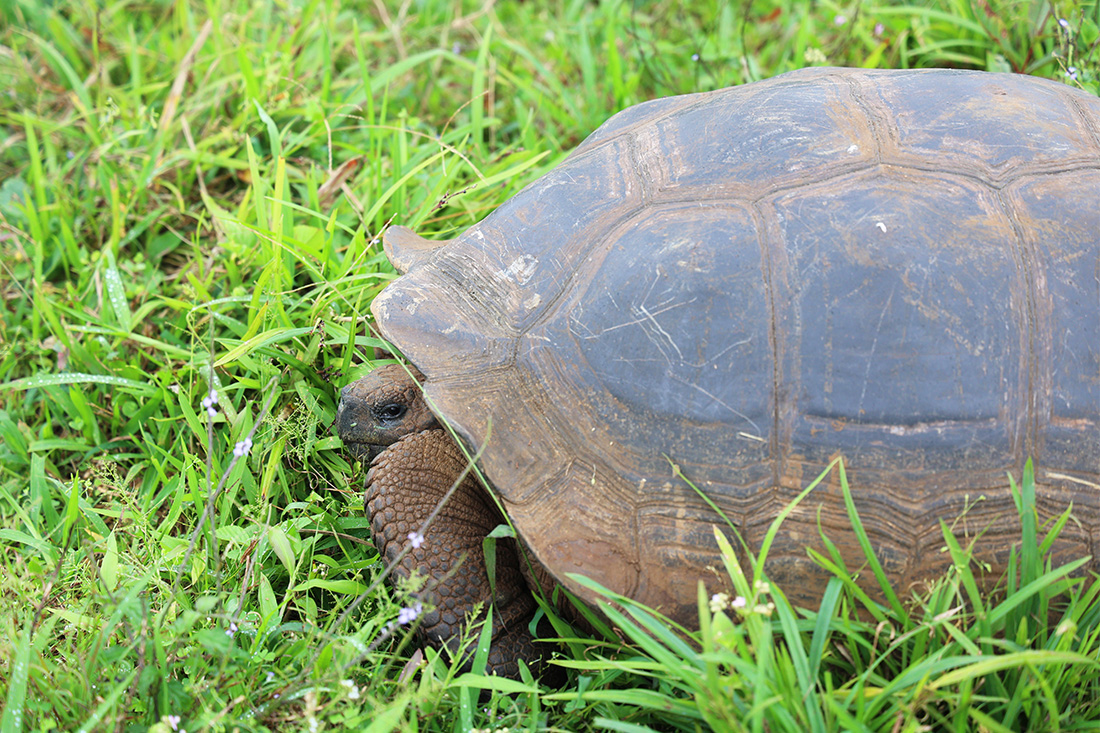Of all the wildlife in the Galapagos, perhaps the most iconic – certainly the most famous – is the giant tortoise. But where’s the best place to see the famous giant tortoises of the Galapagos Islands? On a recent vacation visit to the Galapagos Islands, we traveled to the highlands of Santa Cruz Island to walk among the giant tortoises at Montemar, a private sanctuary designed just for them.
where’s the best place to see the famous giant tortoises of the Galapagos Islands?
the highlands of Santa Cruz island
On a recent vacation visit to the Galapagos, we were treated to a very special experience in the highlands of Santa Cruz Island. Because of the altitude, there’s a distinctive cloud pattern in this area, which creates a micro-climate. In the case of the highlands, the micro-climate offers plentiful water, both from the drizzle of the dry season and the heavy rain of the wet season.
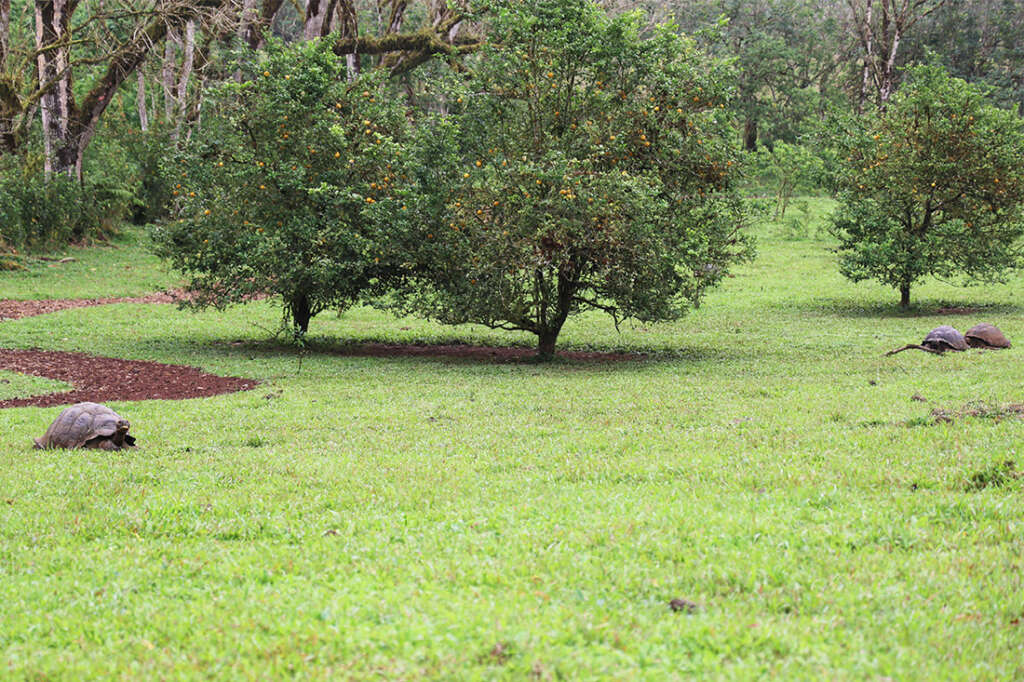
The giant tortoises of the Galapagos on Santa Cruz Island. Photo © Dandelion Chandelier.
This area of Santa Cruz is fertile ground for growing coffee beans and several cash crops that would not grow in the more arid lowlands.
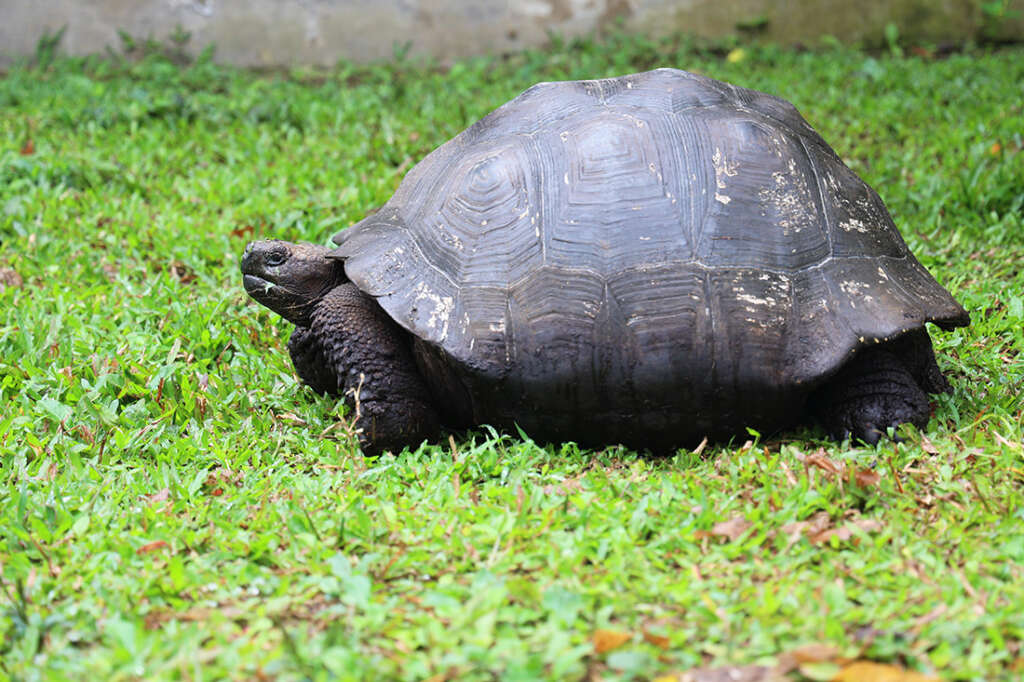
The giant tortoises of the Galapagos on Santa Cruz Island. Photo © Dandelion Chandelier.
Among other important benefits, these climate conditions are also perfect for giant tortoises to thrive. Here, they can mate, feed and rest before their long annual migration to the shoreline.
a word about tortoises v. turtles and terrapins
In case you’re wondering, there are distinct differences between these iconic giant tortoises and their equally famous cousins, the giant sea turtles.
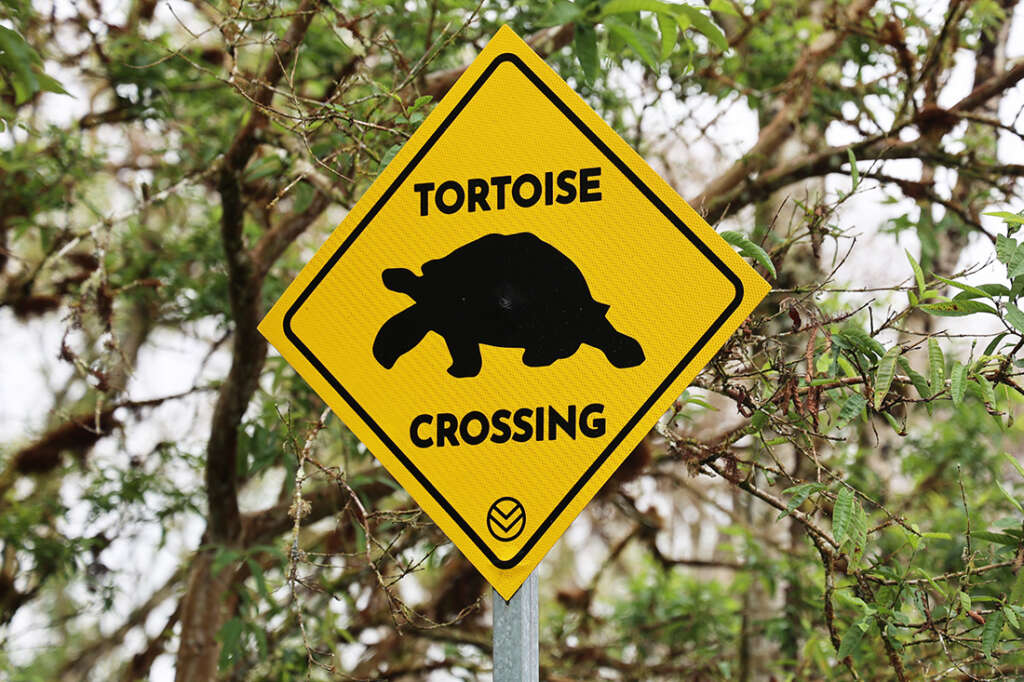
Photo © Dandelion Chandelier.
Tortoises live on dry land – they eat plants and other vegetation and will dip into a mud pond or communal pool only to regulate their temperature and wash off any parasites that might be attached to their undercarriage. When threatened or fearful, giant tortoises retract into their shells. There are no natural predators for these reptiles once their shells fully harden around four years of age. But sadly, humans have been and sometimes continue to be the greatest predator that giant tortoises have to face.
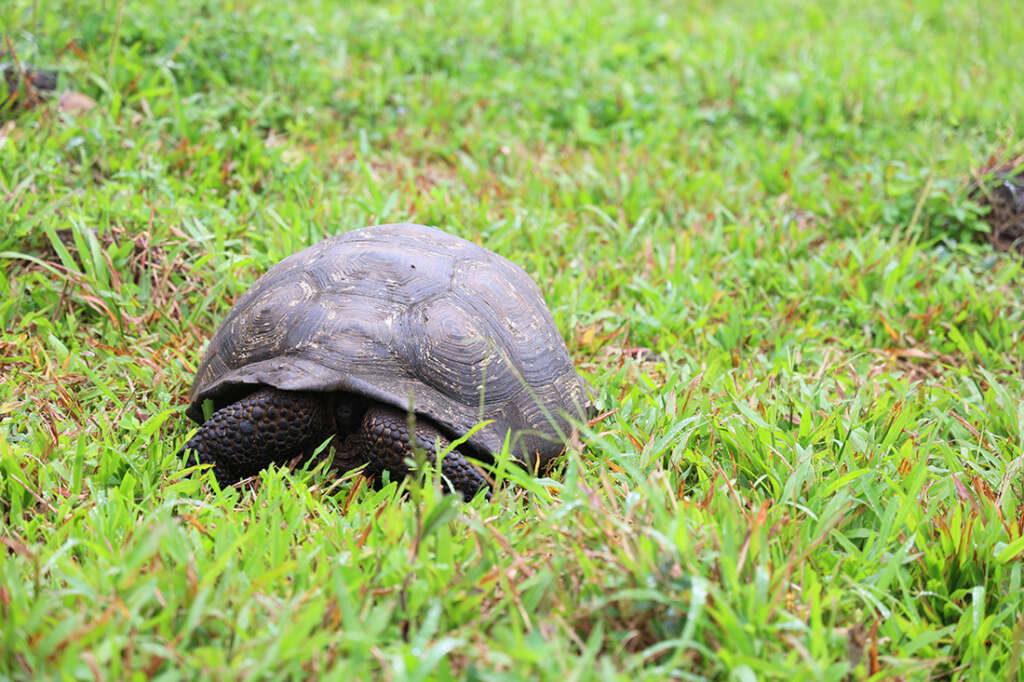
Giant tortoises on Santa Cruz Island in the Galapagos. Photo © Dandelion Chandelier.
Turtles, on the other hand, are found only in saltwater. They surface to breath and sometimes come ashore for short periods, but they are marine animals. Unlike a tortoise, which is has legs, the green sea turtles of the Galapagos have wide fins.
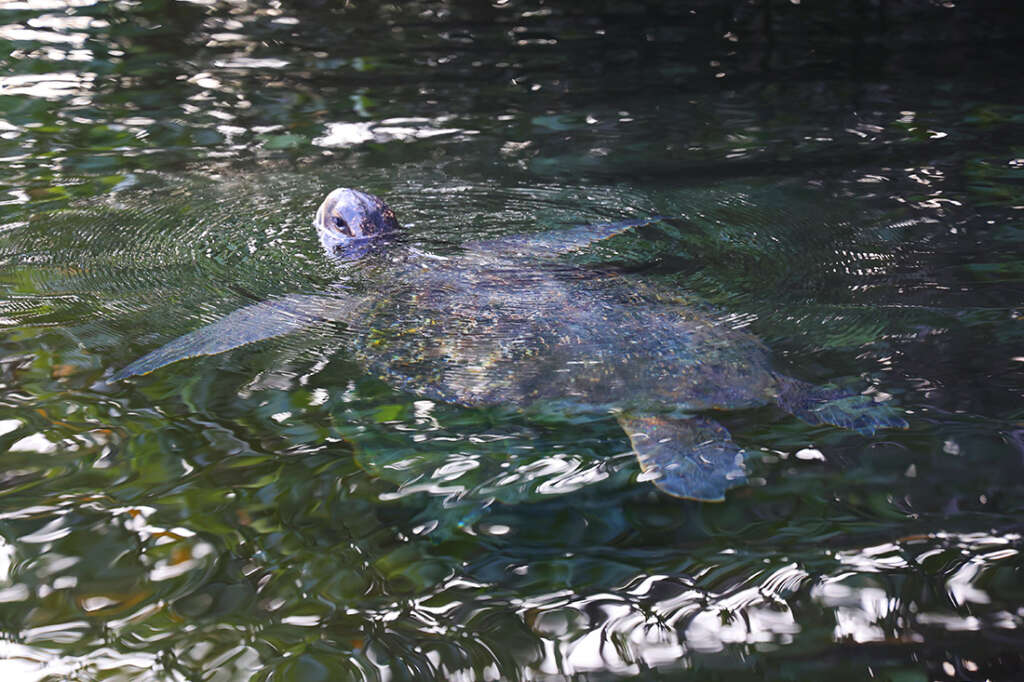
Green sea turtle in Elizabeth Bay in the Galapagos Islands. Photo © Dandelion Chandelier.
Finally, there’s the terrapin. They live only in freshwater, and in many ways are a hybrid of the tortoise and the turtle. Their legs are strong enough for walking on the ground but also wide enough to power them through the water. They can be found in bodies of fresh water, or on the nearby shoreline.
Montemar, Santa Cruz Island, the Galapagos
We had our once-in-a-lifetime experience walking among the giant tortoises of the Galapagos Islands at a special property in the highlands of Santa Cruz Island. Montemar is a combination of many things.
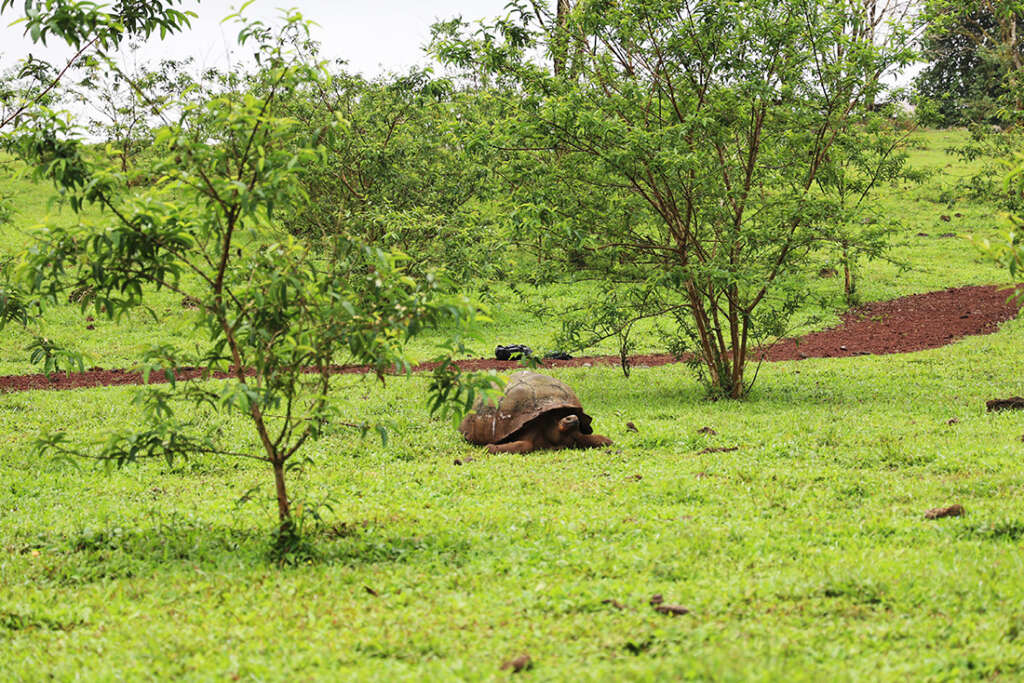
The best place to see the famous giant tortoises of the Galapagos Islands. Photo © Dandelion Chandelier.
First and foremost, it’s a private sanctuary for giant tortoises, which can be seen across the landscape from almost every viewpoint.
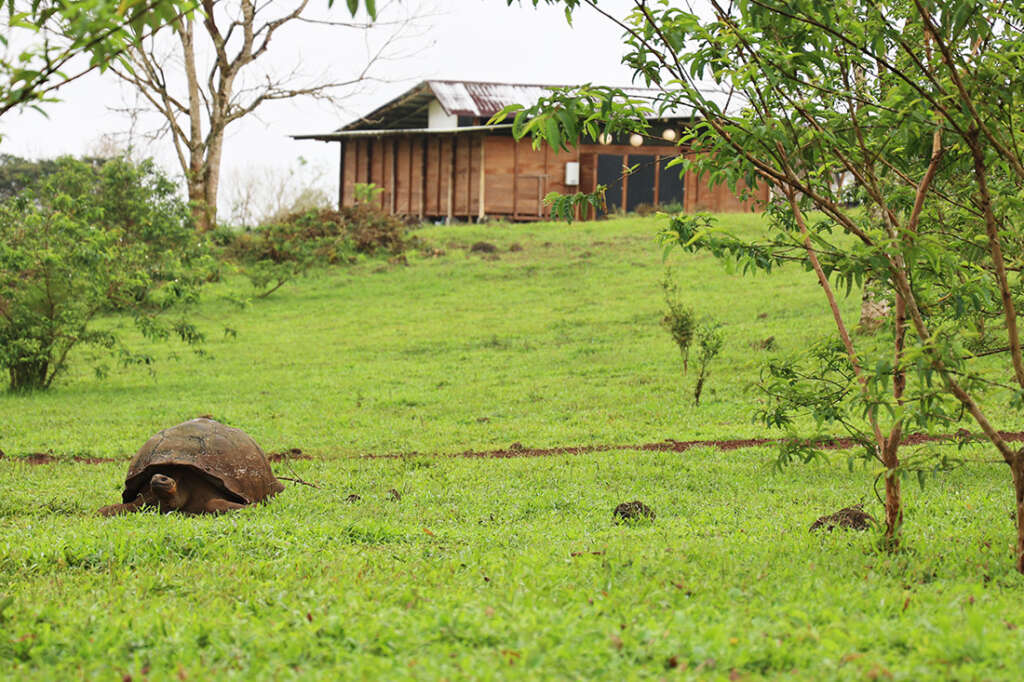
The best place to see the famous giant tortoises of the Galapagos Islands. Photo © Dandelion Chandelier.
The entire operation is built around protecting and preserving the population of giant tortoises on the island. To that and, there’s even a small eco-luxury boutique hotel on the property with two villas, for those who want to wake to the site of giant tortoises in the morning light.
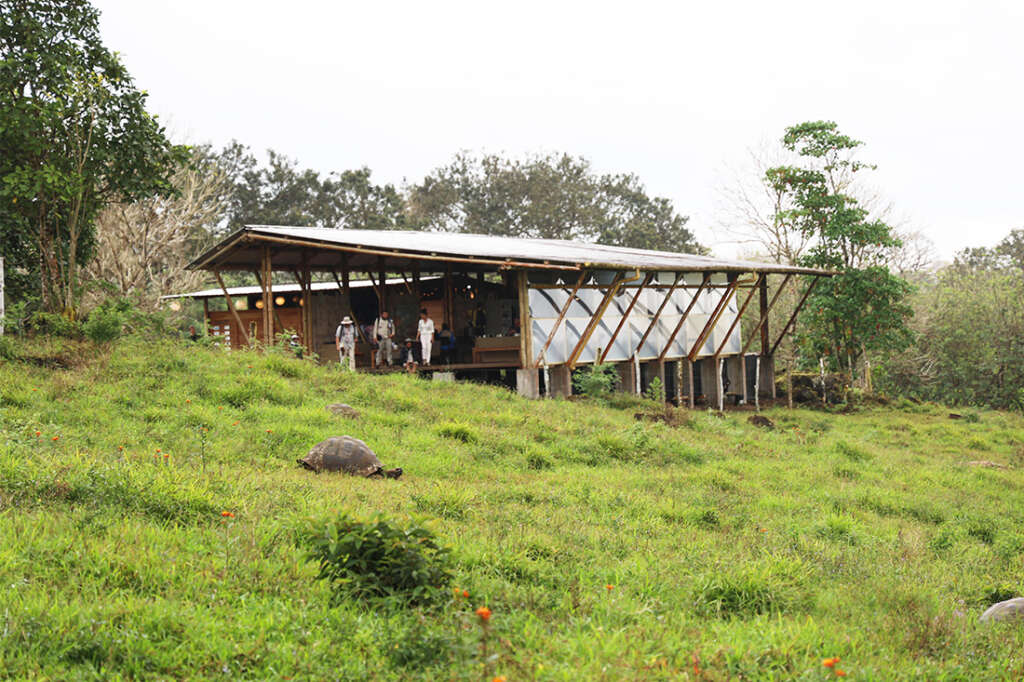
Photo © Dandelion Chandelier.
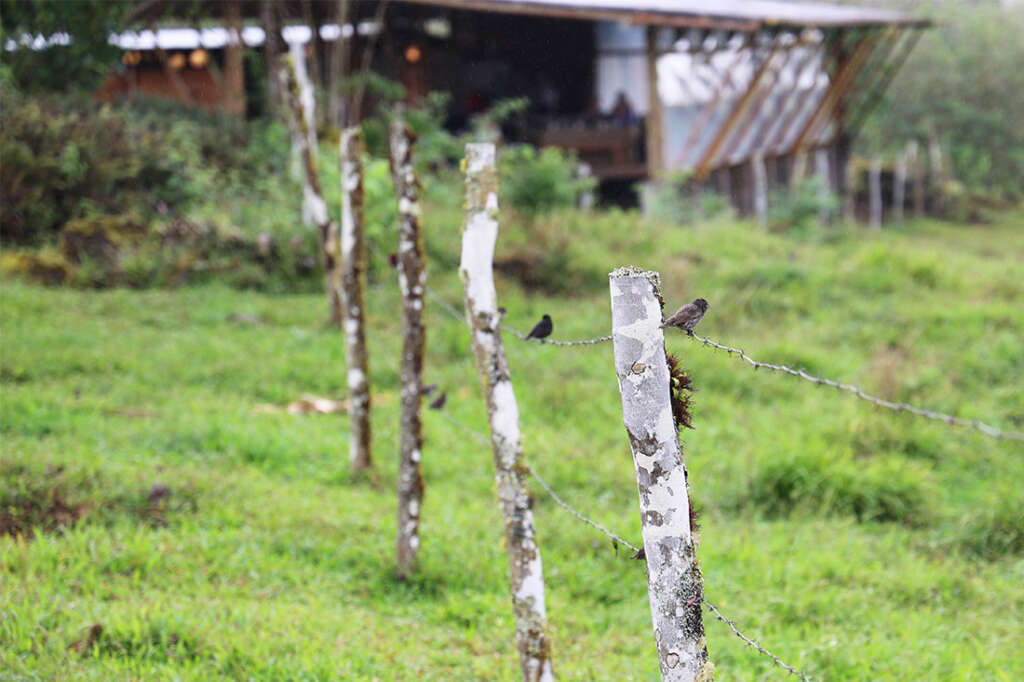
Photo © Dandelion Chandelier.
the mud hole
To regulate their temperature, giant tortoises need access to mud or small ponds. The mud hole at Montemar seemed to fit the bill perfectly.
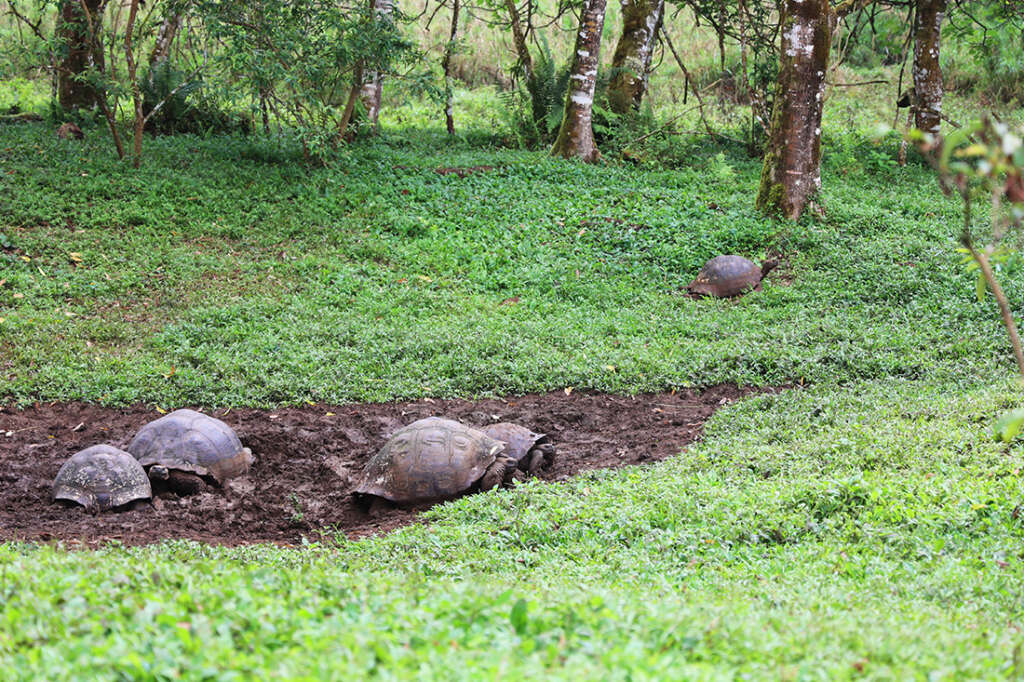
Photo © Dandelion Chandelier.
the pond
More of the giant tortoises seemed to opt for the large pond in the center of Montemar. It’s truly a scene unlike any we’ve ever seen before.
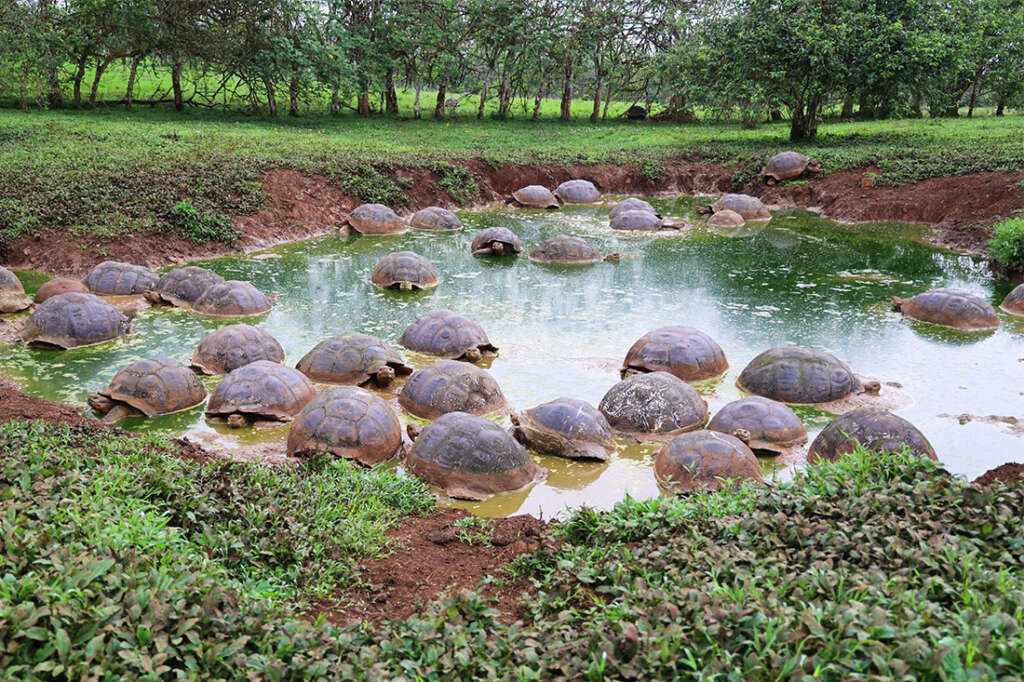
Photo © Dandelion Chandelier.
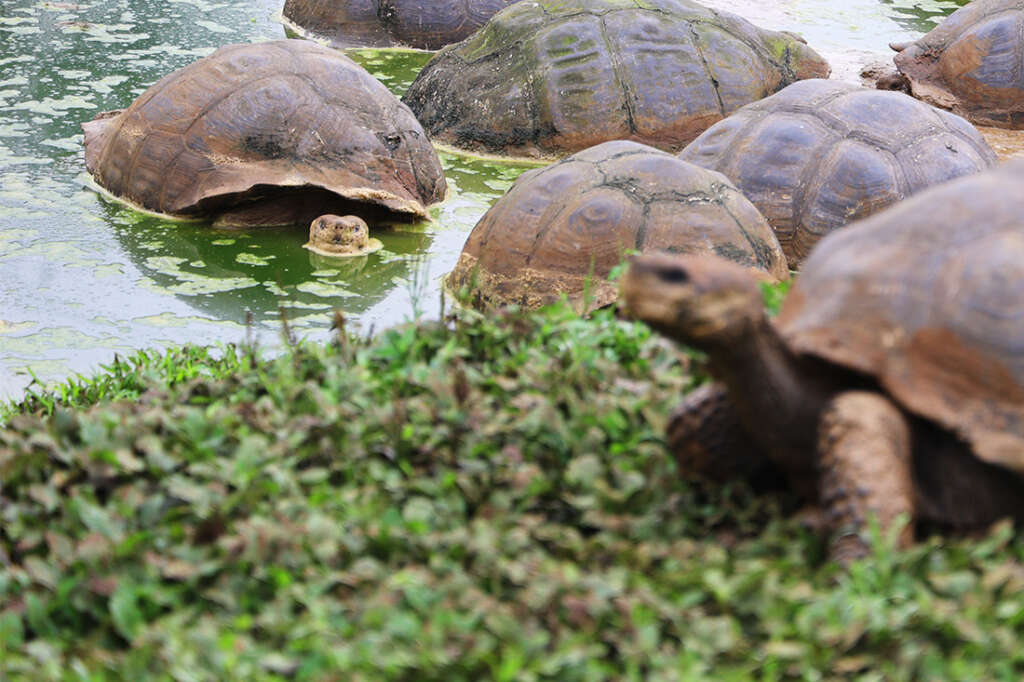
Photo © Dandelion Chandelier.
standout personalities in the giant tortoise community at the farm
One might think at first glance that every giant tortoise pretty much looks like every other giant tortoise. But this is definitely not the case. As we roamed the property, we looked at the faces and behaviors of the various tortoises, and we noticed lots of interesting personalities. Just like a random population of humans, every one of these giant tortoises has a unique personal style (at least from what we could see).
the elders
Giant tortoises are long-lived. In fact, they can reach the advanced age of 180 years. Because food is plentiful for these land-based reptiles, they can grow extremely large over the course of their lives. We spotted a couple of enormous elders among the tortoises at Montemar.
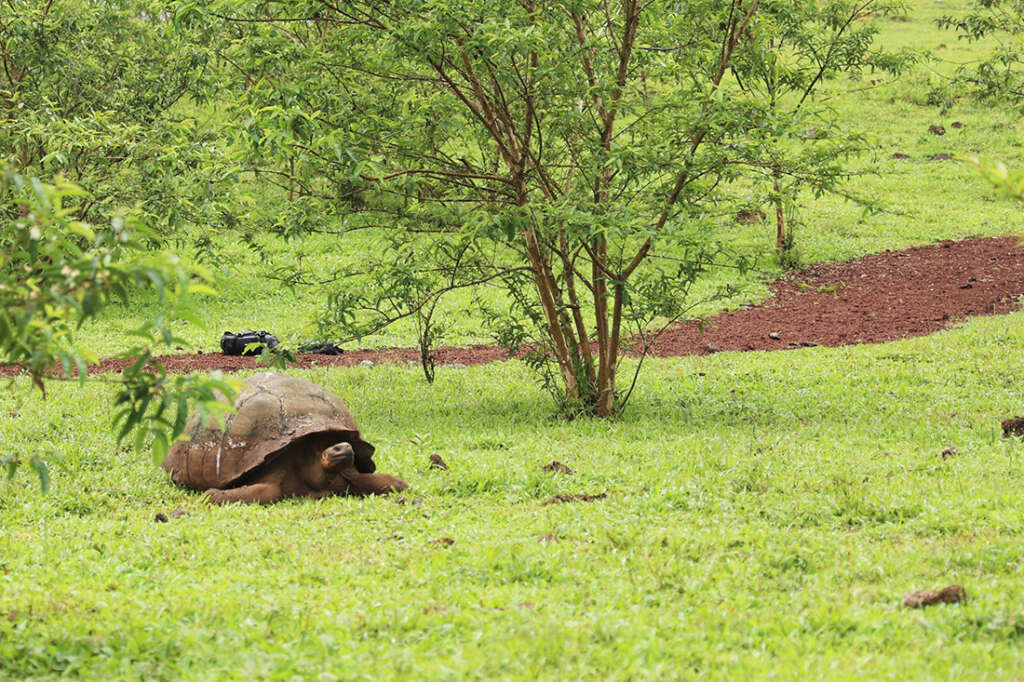
Photo © Dandelion Chandelier.
As our group approached a couple of the oldest tortoises seemed to feel that our presence was disrupting their morning. So they left. And they may be old, but they’re spry.
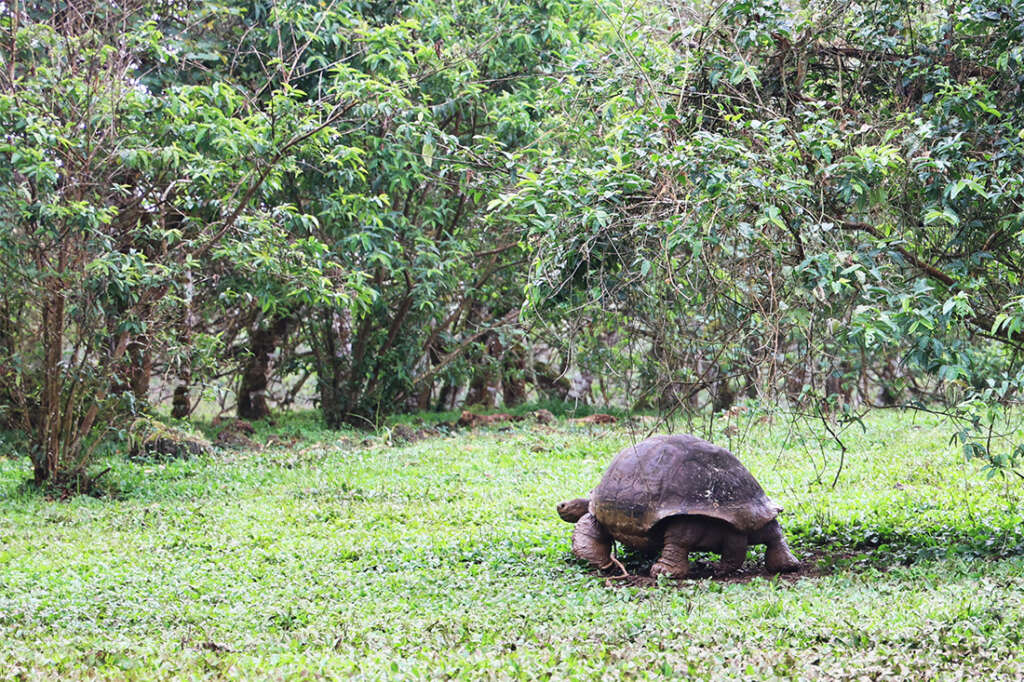
Photo © Dandelion Chandelier.
the notable pairs
We think of giant tortoises as being solitary animals, but on our visit to the highlands of Santa Cruz, we noticed all kinds of interesting pairings. In some cases, two tortoises seemed to be completely in sync when viewing their visitors. Like, can we help you?
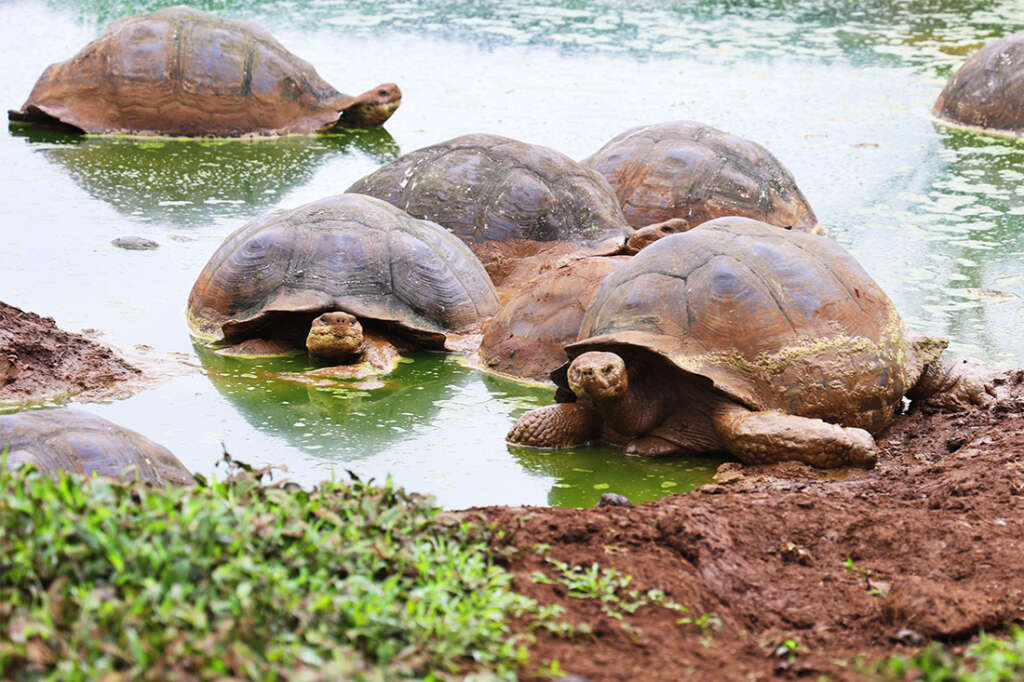
Photo © Dandelion Chandelier.
In other cases, though, it seemed that the tortoise pair clearly didn’t see eye to eye.
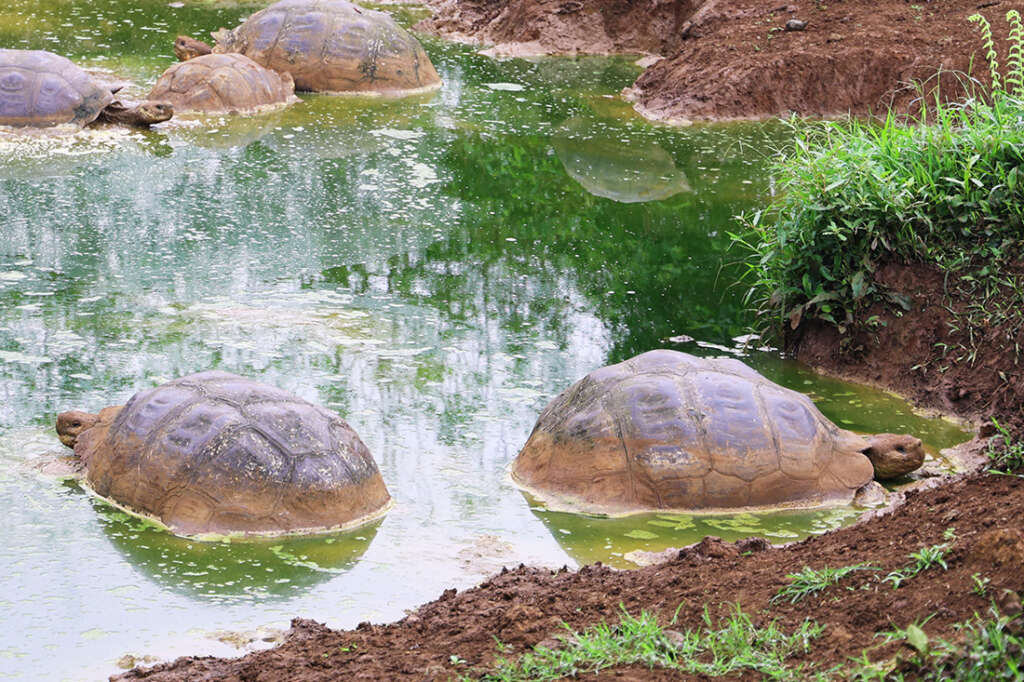
Photo © Dandelion Chandelier.
Most of the time, though, the rare pairs of tortoises we spotted seemed to be in perfect harmony.
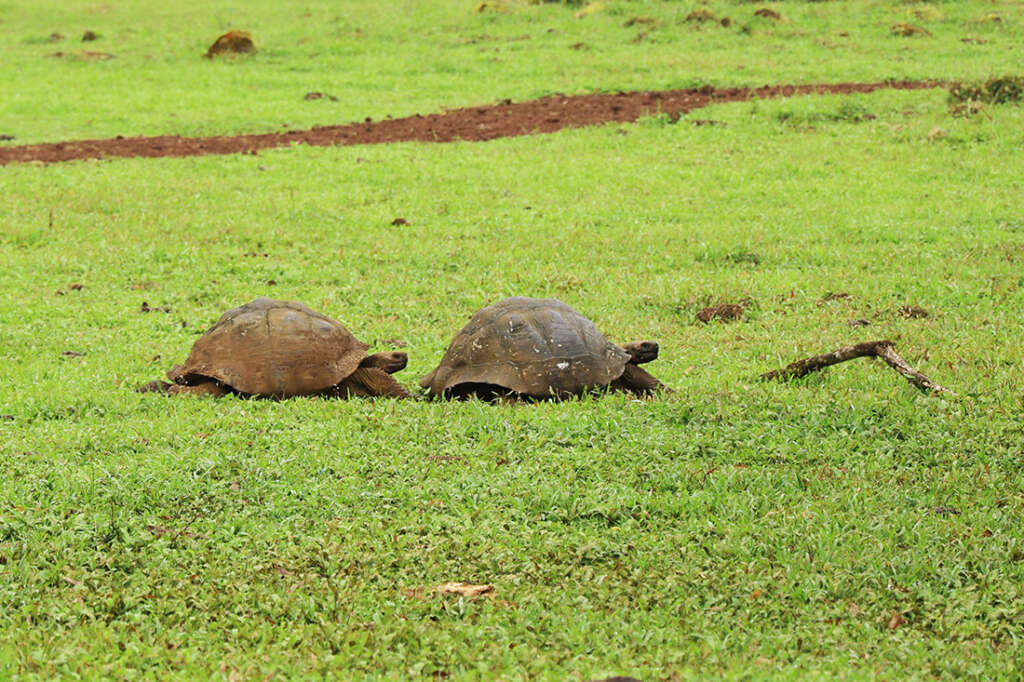
Photos from the highlands of Santa Cruz Island in the Galapagos, the best place to see the famous giant tortoises. Photo © Dandelion Chandelier.
the individual standouts
Of course, even in a muddy pool filled with lookalikes, there are some faces that just stand out in a crowd. Sometimes because of a curious expression.
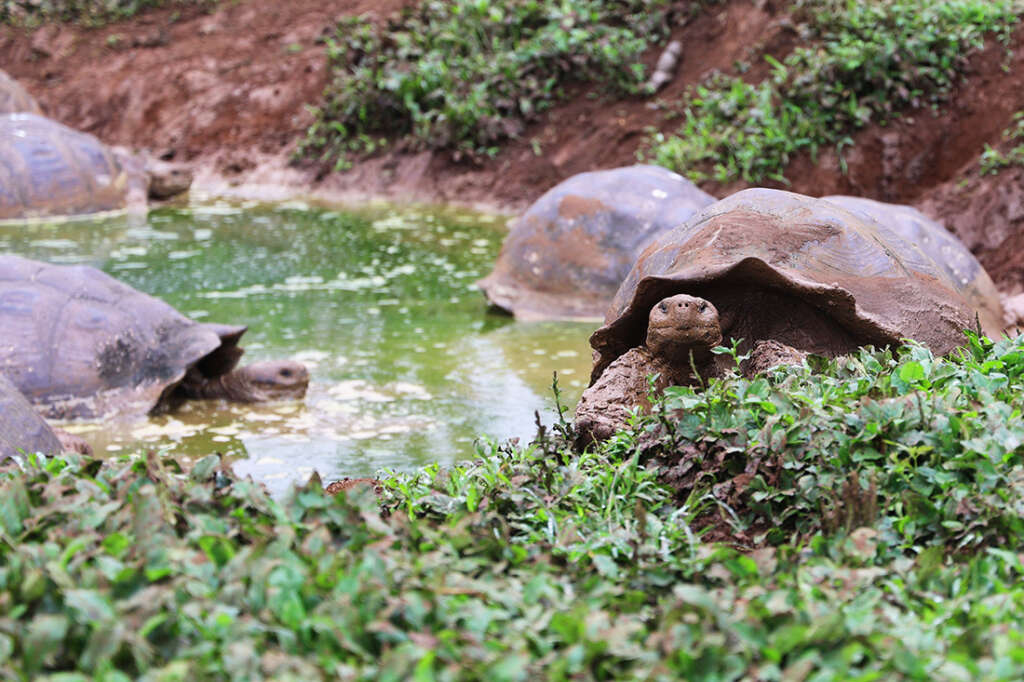
Photo © Dandelion Chandelier.
Sometimes because of goofball behavior (we bet this one is like the Rob Gronkowski of the tortoise pond).

Visit to the highlands of Santa Cruz Island in the Galapagos, the best place to see the famous giant tortoises. Photo © Dandelion Chandelier.
Occasionally, one of the giant tortoises caught our eye because it seemed to be spoiling for a fight. Like, you wanna piece of me?
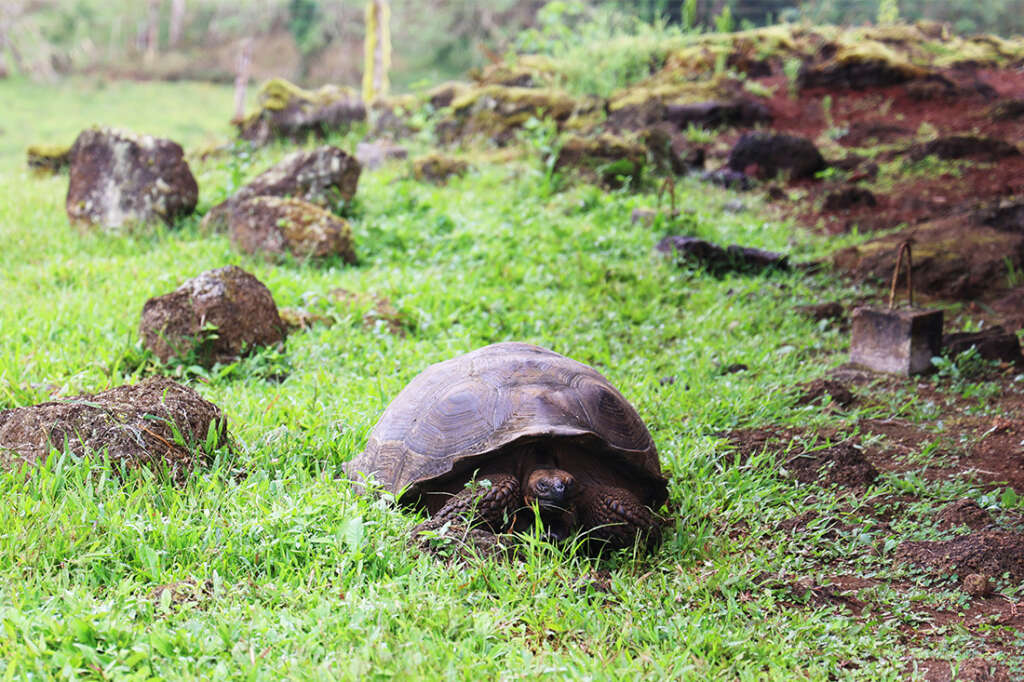
Visit to the highlands of Santa Cruz Island in the Galapagos, the best place to see the famous giant tortoises. Photo © Dandelion Chandelier.
And every now and then we paused to take a closer look at a particular giant tortoise because of a hopeful – almost soulful – expression that touched our hearts.
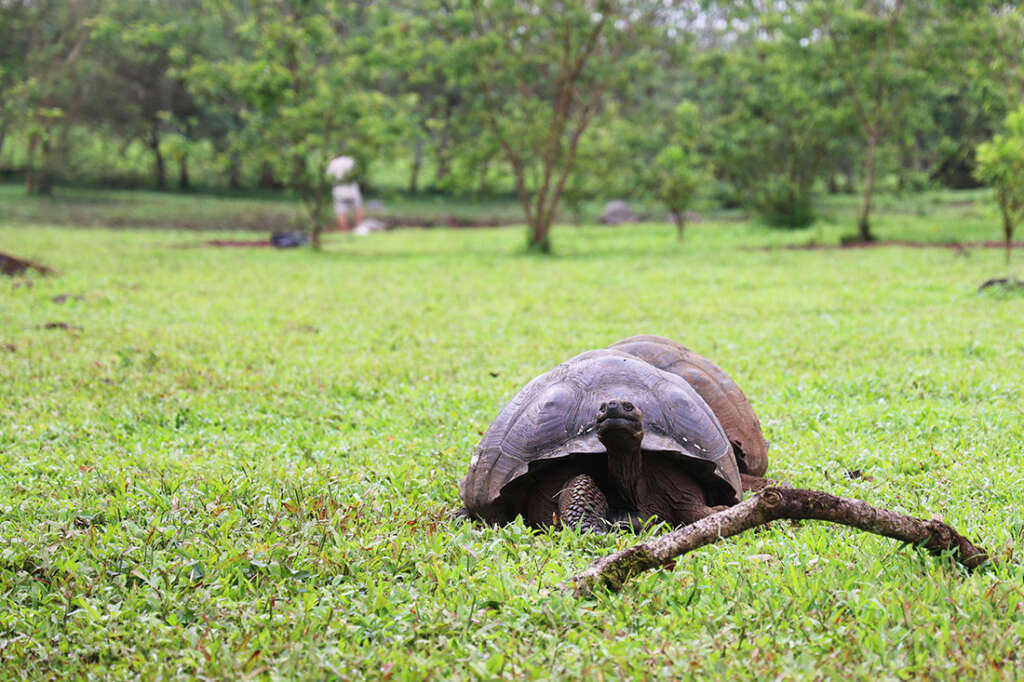
Visit to the highlands of Santa Cruz Island in the Galapagos, the best place to see the famous giant tortoises. Photo © Dandelion Chandelier.
Crops of the highlands
tropical fruit
In addition to providing sanctuary for the giant tortoises, and a luxury eco-tourism opportunity for visitors, Montemar is home to several varieties of citrus fruit trees, including older specimens like this lemon tree.
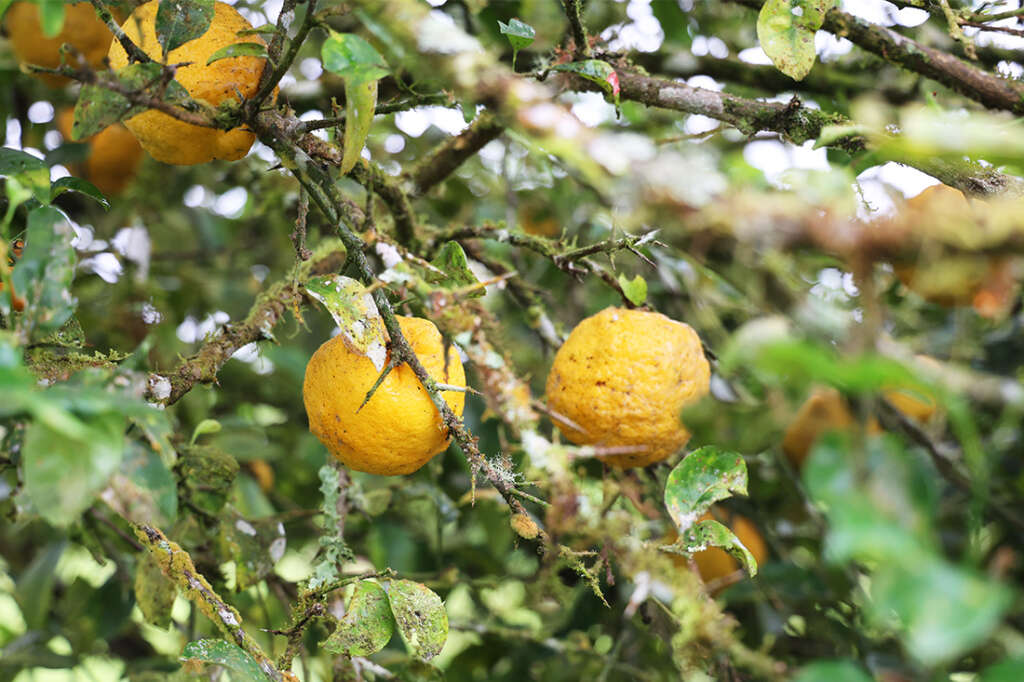
Photo © Dandelion Chandelier.
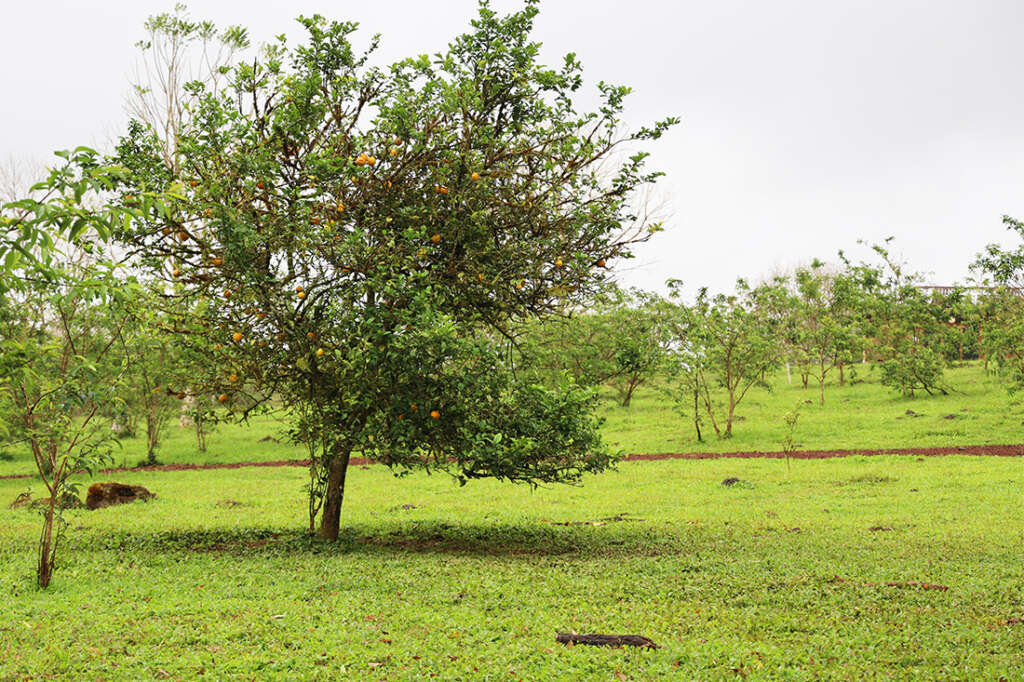
Visit to the highlands of Santa Cruz Island in the Galapagos, the best place to see the famous giant tortoises. Photo © Dandelion Chandelier.
Coffee beans
There’s a significant coffee growing operation at Montemar, the proceeds of which are used to help fund the ongoing operation of the giant tortoise sanctuary. Visitors to the property can experience an Ecuadorian coffee tasting. And the works of local artisans are available for sale, as well.
best place to see the famous giant tortoises of the Galapagos Islands
Those are some of our best photos from a recent vacation visit to the highlands of Santa Cruz Island in the Galapagos, home to the Montemar private sanctuary for giant tortoises, which is committed to the protection and propagation of these remarkable and precious reptiles. To learn more about conservation efforts like these, click here.
And if you ever have a chance to visit this magical place, definitely do, dear reader.
